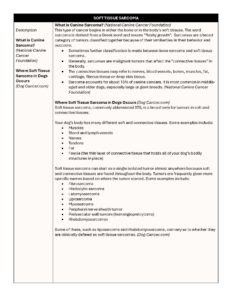Canine Soft Tissue Sarcoma
(Connective Tissue) & Breeds at Risk
Research, Resources & Education
This website is based on research and is NOT created to diagnose your pet.
Each animal is an individual and may exhibit symptoms in a different way.
It is advised that you ALWAYS CHECK WITH YOUR VETERINARIAN for a proper diagnosis and treatment plan.
Please visit Lost Temple Fitness & Cancer for more information of cancer in humans including
What is Cancer and Treatments.
Table of Contents
Soft Tissue Sarcoma
Soft tissue sarcoma, is a broad term for tumors in soft and connective tissues.
Your dog’s body has many different soft and connective tissues. Some examples include Muscle, Blood and Lymph Vessels, Nerves, Tendons, Fat and Fascia.
Symptoms depend on the region, which may include difficulty walking or inability to use an affected limb or intestial blockage signs may be vomiting or lack of appetite (see symptoms for complete list).
Treatments range depending on the region affected including Surgery, Chemotherapy, Radiation, Immunotherapy and Pain/Inflammation Medications.
What Dogs are at Risk?
Some Dogs that are at Risk due to Genetic Predisposition
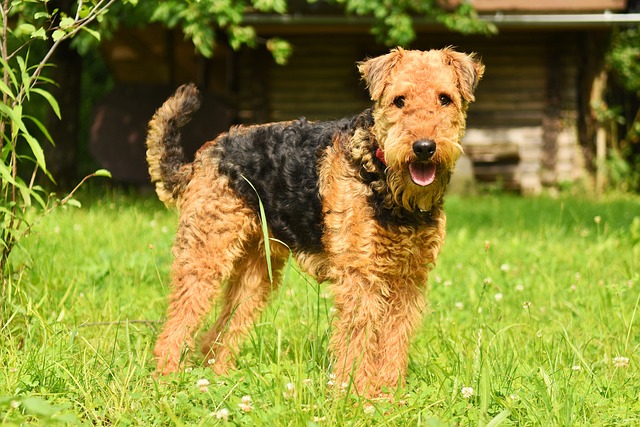


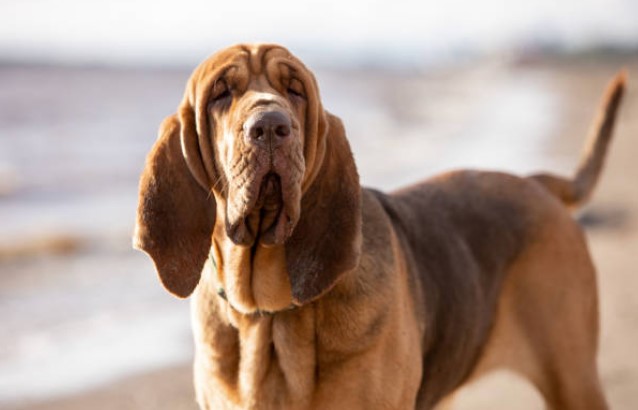
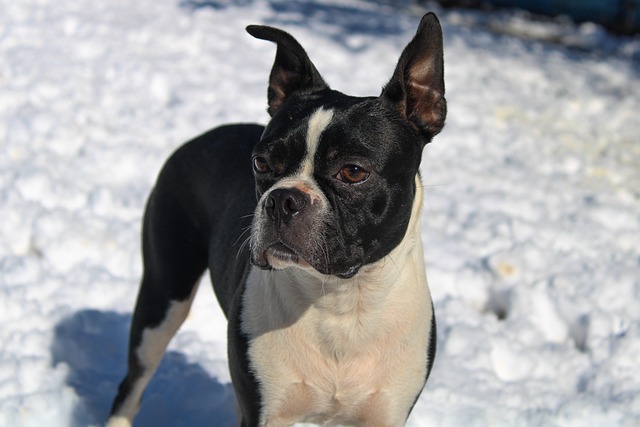



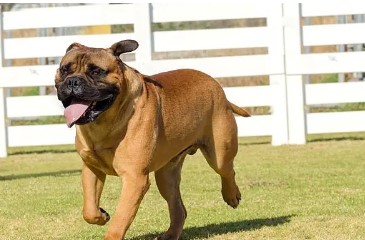
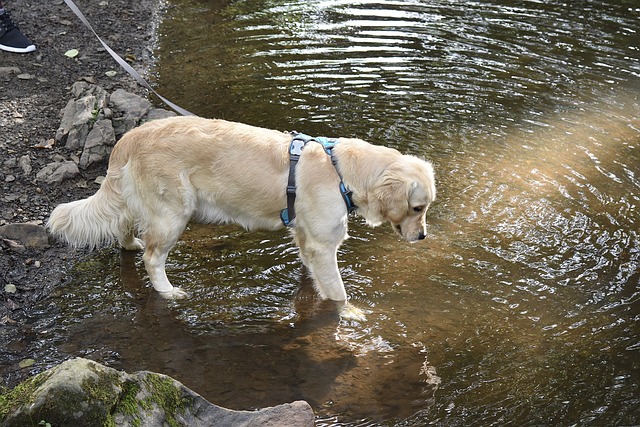
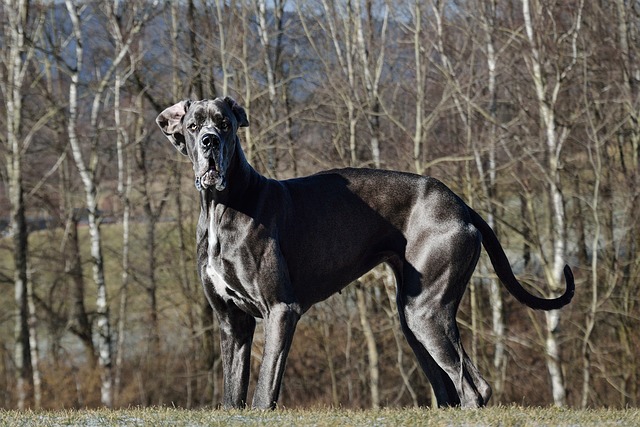
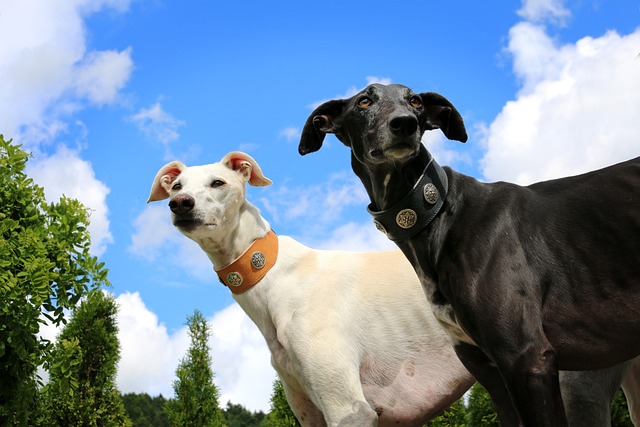

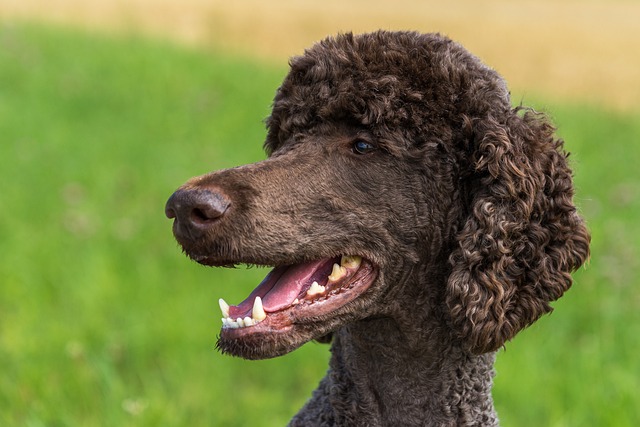


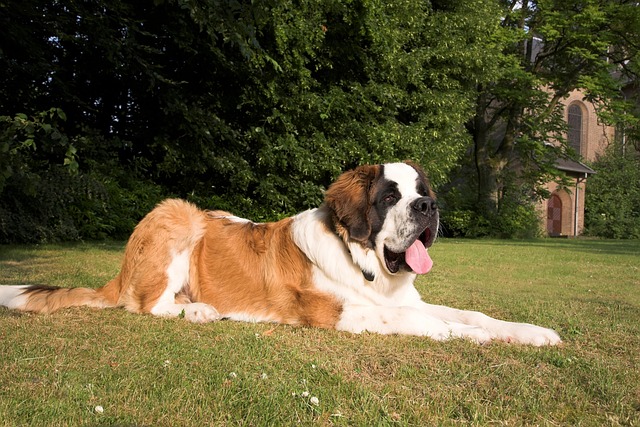

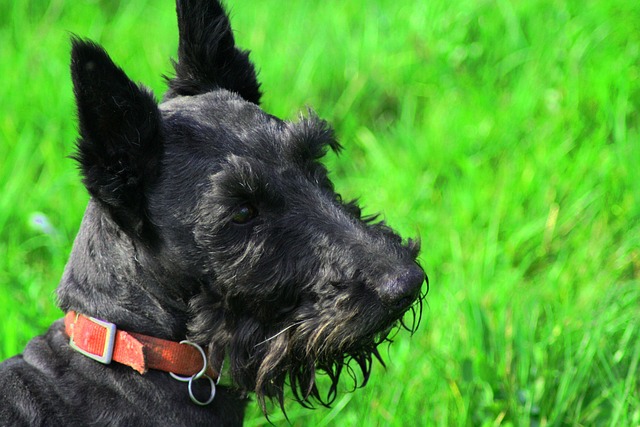

What is Soft Tissue Sarcoma & Types
What is Canine Sarcoma? (National Canine Cancer Foundation)
What is Canine Sarcoma? (National Canine Cancer Foundation)
This type of cancer begins in either the bone or in the body’s soft tissues. The word sarcoma is derived from a Greek word and means “fleshy growth”. Sarcomas are a broad category of tumors classified together because of their similarities in their behavior and outcome.
- Sometimes further classification is made between bone sarcoma and soft tissue sarcoma.
- Generally, sarcomas are malignant tumors that affect the “connective tissues” in the body.
- The connective tissues may refer to nerves, blood vessels, bones, muscles, fat, cartilage, fibrous tissue or deep skin tissue.
- Sarcoma accounts for about 15% of canine cancers. It is most common in middle-aged and older dogs, especially large or giant breeds. (National Canine Cancer Foundation)
Where Soft Tissue Sarcoma in Dogs Occurs (Dog Cancer.com)
Where Soft Tissue Sarcoma in Dogs Occurs (Dog Cancer.com)
Soft tissue sarcoma, commonly abbreviated STS, is a broad term for tumors in soft and connective tissues.
Your dog’s body has many different soft and connective tissues. Some examples include:
- Muscles
- Blood and lymph vessels
- Nerves
- Tendons
- Fat
- Fascia (the thin layer of connective tissue that holds all of your dog’s bodily structures in place)
Soft tissue sarcoma can start as a single isolated tumor almost anywhere because soft and connective tissues are found throughout the body. Tumors are frequently given more specific names based on where the tumor started. Some examples include:
- Fibrosarcoma
- Histiocytic sarcoma
- Leiomyosarcoma
- Liposarcoma
- Myxosarcoma
- Peripheral nerve sheath tumor
- Perivascular wall tumors (hemangiopericytoma)
- Rhabdomyosarcoma
Some of these, such as liposarcoma and rhabdomyosarcoma, can vary as to whether they are clinically defined as soft tissue sarcomas. (Dog Cancer.com)
Types of Skin Cancer in Dogs (AKC)
Types of Skin Cancer in Dogs (AKC)
There are several different types of skin cancer in dogs, just like there are several different layers of the skin. Each layer and skin component can develop distinct tumors, some of which may turn out to be cancerous.
Some of the more common types of skin cancer in dogs are:
- Malignant melanoma
- Mast cell tumors
- Squamous cell carcinoma
- Histiocytic cell tumors
- Fibrosarcoma
Malignant Melanoma
Melanomas can be either malignant or benign.
- These tumors are often dark-pigmented or can lack pigment. While benign melanomas are more common, malignant melanomas are a serious concern, as they grow quickly and have a high risk of metastasis (spreading to other organs).
- Malignant melanomas are most commonly found on the lips, mouth, and nail beds. According to some researchers, the head, neck and scrotum areas are also moderately predisposed to skin cancer.
- Certain breeds, for exampleMiniature and Standard Schnauzers and Scottish Terriers, are at an increased risk, and males appear to be affected more than females.
- Malignant melanomas look like raised lumps, often ulcerated, and can also look like gray or pink lumps in the mouth.
- Nail bed malignant melanomas, on the other hand, show up as toe swelling and possibly even loss of the toenail itself and destruction of underlying bone. Nail bed and footbed tumors often develop a secondary infection, leading to a misdiagnosis.
- These types of tumors usually metastasize to other parts of the body, decreasing the chances for a good outcome.
Mast Cell Tumors (Also see Lost Temple Pets Mast Cell Tumors)
Mast cell tumors are the most common types of skin cancer tumors.
- Mast cells release histamine, which is the chemical that causes some of the symptoms of allergic reactions in dogs, like irritation and itching.
- Mast cell tumors are cancers of these cells, and they can grow anywhere on your dog’s skin, as well as in internal organs.
- The most common sites for mast cell tumors are the limbs, lower abdomen, and chest.
- Boxers, Pugs, Rhodesian Ridgebacks, Boston Terriers and older mixed breed dogs seem particularly susceptible to mast cell tumors, which most commonly affect dogs ages 8-to-10 years old.
- This cancer can be difficult to deal with, and your dog could have symptoms associated with toxins released from malignant mast cells, such as stomach ulcers, resulting from histamine release.
Squamous Cell Carcinoma
Skin squamous cell carcinoma is the most commonly diagnosed carcinoma of the skin, and primarily affects older dogs, especially Bloodhounds, Basset Hounds, and Standard Poodles.
- These tumors typically show up on the head, lower legs, rear, and abdomen, and appear as raised patches or lumps that are firm to the touch.
- Exposure to the sun can be a cause of squamous cell carcinoma, but according to the National Canine Cancer Foundation, “In dogs, the theory of exposure to sun is less obvious. It is believed that there may be some association with papilloma virus.”
- These tumors usually appear on your dog’s abdomen, which is the area least protected from the sun by hair.
Histiocytic Cell Tumors
Histiocytic cells are a type of skin cell. When these cells proliferate into tumors, they are classified as histiocytic cell tumors.
- These types of tumors are relatively common and typically affect dogs under 3 ¬Ω years old, especiallyScottish Terriers, Bulldogs, Greyhounds, Boxers, Boston Terriers, and Chinese Shar-Pei.
- There are three types of histiocytic cell tumors: histiocytomas, which are the most common; systemic histiocytosis, which mainly affects Bernese Mountain Dogs; and malignant histiocytosis, which also mainly affects Bernese Mountain Dogs and first shows up in the internal organs.
Fibrosarcoma
Fibrosarcoma and spindle cell tumors originate in the connective tissues of the skin and beneath the skin. These tumors can have a varied appearance, and while they are typically slow growing, they do tend to recur after surgical removal. Luckily, this type of tumor rarely metastasizes.
- Fibrosarcoma usually affects dogs when they are middle-aged or older, with an average age of 10 years.
- Sometimes, an aggressive type of fibrosarcoma can affect young dogs. Your veterinarian will send off a sample of the tumor to a pathologist to determine whether or not the tumor is a low- or high-grade tumor, a classification that refers to the rate of cell division. This will help them give your dog an accurate prognosis and determine the best course of treatment.
- This type of tumor is often found on the limbs.
- In addition to invading nearby structures, sometimes impeding their function, the tumors can also bleed, ulcerate, and become infected. (AKC)
Soft Tissue Sarcoma Videos
YouTube Videos that help explain Soft Tissue Sarcomas in Dogs
Disclaimer:
This is for research only and Lost Temple Pets does not endorse any video presented on this website.
It is advised that you ALWAYS CHECK WITH YOUR VETERINARIAN for a proper diagnosis and treatment plan.
Causes
Causes of Skin Cancer in Dogs (AKC)
Causes of Skin Cancer in Dogs (AKC)
Skin cancer can have a variety of causes.
- Just like with people, genetics play a large role in which dogs are more likely to get skin cancer. In fact, it is believed that genetics are the number one factor in the risk of a dog getting skin cancer.
- Triggers that may lead to a dog developing skin cancer include too much exposure to the sun, chemicals in the environment, hormonal abnormalities, and certain types of viruses. (AKC)
Causes of Soft Tissue Sarcoma in Dogs (Dog Cancer.com)
Causes of Soft Tissue Sarcoma in Dogs (Dog Cancer.com)
There is no specific known cause of soft tissue sarcoma in dogs, and it is likely multifactorial, like other cancers.1
- However, chronic inflammation and inflammation due to infection may generally increase the risk of developing cancer. This includes the inflammation caused by medical implants and other foreign bodies in sites that later develop soft tissue sarcoma.
- Previous radiation treatments may also predispose dogs to develop soft tissue sarcoma at the radiotherapy site.
- This does not mean all soft tissue sarcoma develops directly due to inflammation in an area; just that prior inflammation may predispose that area to develop a soft tissue sarcoma.
- The artificial selection of physical traits and characteristics for particular dog breeds may also play a role in the likelihood of developing soft tissue sarcoma, with some breeds showing increased rates of this disease. (Dog Cancer.com)
What Causes Soft Tissue Sarcomas? (VCA Animal Hospital)
What causes soft tissue sarcomas? (VCA Animal Hospital)
For most cases of soft tissue sarcomas, no direct cause has been determined for their development.
- Sarcomas at injection sites occur in cats but are rare in dogs.
- In cats exposed to a form of the feline leukemia virus (called feline sarcoma virus), the development of sarcomas on the head and neck sometimes occurs. (VCA Animal Hospital)
Symptoms
Symptoms of Soft Tissue Sarcoma in Dogs (PetMD by Chewy)
Symptoms of Soft Tissue Sarcoma in Dogs (PetMD by Chewy)
Signs of soft tissue sarcomas depend on the location of the tumor in your dog’s body.
Some common areas include:
- Tumors arising from muscle tissue: Your dog may exhibits signs of pain (yelping, pulling away) when touching the affected area and may have a visible and firm mass.
- Tumors on the legs, which may interfere with walking and cause limping or limited mobility.
- Tumors in the abdomen, which may result in vomiting, diarrhea, weight loss, or decreased appetite.
- Tumors arising from nervous tissue, which may cause pain, lameness, muscle atrophy, and paralysis.
- Tumors in the mouth, which may result in bad breath, trouble eating, or decreased appetite.
- Tumors affecting the reproductive organs (such as the prostate), which may result in difficulty urinating or defecating. (PetMD by Chewy)
What are the Clinical Signs of Soft Tissue Sarcomas? (VCA Animal Hospital)
What are the clinical signs of soft tissue sarcomas? (VCA Animal Hospital)
The clinical signs depend on where the tumor is located and the tissues that are affected. Often, pets have a noticeable mass that is growing in size.
Signs associated with soft tissue sarcomas include the following:
- Pets that have tumors arising from muscle tissue may show signs of pain in the affected region and may have a distinct firm and growing mass (tumor).
- Tumors that are located on the limbs may cause changes in your pet’s ability to walk and the limbs may have obvious swelling.
- Pets that have tumors arising from nervous tissue may be unable to use the affected limb or may show other neurological signs.
- Pets with intestinal tumors may have signs of an intestinal blockage, such as vomiting, diarrhea, lack of appetite, weight loss, and abdominal pain.
- Pets with soft tissue sarcomas in the mouth often have halitosis (bad breath), difficulty eating, loss of appetite, bleeding in the mouth, or obvious tumors in the mouth.
- Signs of a soft tissue sarcoma affecting the reproductive system depend on the location of the tumor. For example, if the prostate is affected, difficulty with urinating or defecating may be observed. (VCA Animal Hospital)
Testing & Grading / Staging
How are Soft Tissue Sarcomas Diagnosed? (VCA Animal Hospital)
How are soft tissue sarcomas diagnosed? (VCA Animal Hospital)
- In some cases, a fine needle aspiration (FNA) may be performed.
- FNA involves taking a small needle with a syringe to suction a sample of cells directly from the tumor and placing them on a microscope slide.
- A veterinary pathologist then examines the slide under a microscope.
- If a diagnosis is not confirmed by this method, a biopsy may be needed.
- A biopsy is a surgical excision of a piece of the tumor.
- Pieces of the tumor are then examined under the microscope. This is called histopathology. A biopsy is beneficial because it gives an indication as to how aggressive the tumor is and how its treatment should be approached.
- Staging (searching for potential spread to other locations in the body) may be recommended.
- This may include bloodwork, urinalysis, radiographs (X-rays) of the lungs, and possibly an abdominal ultrasound.
- If any lymph nodes are enlarged or feel abnormal, further sampling may be pursued to determine if any spread is present. (VCA Animal Hospital)
Soft Tissue Sarcoma Grading (PetMD by Chewy)
Soft Tissue Sarcoma Grading (PetMD by Chewy)
Soft tissue sarcoma tumors are graded on a scale of 1 to 3:
- Grade 1 (low): Most cases of soft tissue sarcoma in dogs are Grade 1. They rarely spread (metastasize) to other areas of the body or invade neighboring tissues.
- Grade 2 (intermediate): Grade 2 is the second most common diagnosed grade for soft tissue sarcoma. They similarly do not typically spread to or invade other parts of the body.
- Grade 3 (high): Only 7 to 17% of soft tissue sarcoma cases are Grade 3. The likelihoods of recurrence and metastasis are higher than in Grades 1 and 2, and Grade 3 soft tissue sarcoma will spread in 40 to 50% of cases diagnosed.
Staging is determined by rating three primary factors:
- How different the cancerous cells look and act in comparisons with healthy cells.
- How many of the tumor’s cells are dividing, which helps to determine how fast the tumor is growing.How many of the tumor’s cells are dying.
- Cell death (apoptosis) is a normal process for all cells, but cancerous cells often find ways to evade it so that the tumor can continue to grow. (PetMD by Chewy)
Treatment
Treatments for Canine Soft Tissue Sarcoma (Dog Cancer.com)
Treatments for Canine Soft Tissue Sarcoma (Dog Cancer.com)
Surgery is usually the most important part of treating soft tissue sarcoma in dogs, and low-grade tumors that are completely removed can be fully cured.
- There are also a variety of other treatments that can be used along with surgery or when surgery is not an option.
Surgery
Whenever possible, your dog’s best bet is to have the tumor completely removed via surgery.
- Your dog’s surgeon will try not to leave any portion of the tumor behind.
- If the tumor is not fully excised (cut out) or if it recurs, your pet may need a second surgery.
- Unfortunately, if your dog’s soft tissue sarcoma is located on a limb, an amputation may be necessary to remove the tumor completely.2,4
Chemotherapy
Chemotherapy is usually only used for soft tissue sarcoma tumors that are high-grade or have spread. It is almost never recommended for low-grade tumors.
- Chemotherapy may also be recommended if your dog had surgery, but the procedure was unsuccessful.
- The exact chemotherapy drug(s) administered will depend on the kind of soft tissue sarcoma your dog is diagnosed with. Doxorubicin, cyclophosphamide, ifosfamide, and 5-fluorouracil are all possibilities.
- Metronomic chemotherapy may also be an option. Metronomic chemotherapy consists of lower daily doses given by mouth. Cyclophosphamide and chlorambucilare the most common drugs chosen for these protocols.
Even though chemo is sometimes used, there is not much information in the literature about the benefits of chemotherapy for soft tissue sarcoma in dogs.
- One small study showed increases in the length of tumor-free periods and minimal side effects for dogs that were given 5-fluorouracil injections around the surgical site.15
- Another study found that doxorubicin had no appreciable benefit for dogs with soft tissue sarcoma and did not decrease recurrence, increase survival time, or decrease the spread of soft tissue sarcoma.16\\
Electrochemotherapy, or the application of electric pulses to tumors to enhance chemotherapy response, is breaking ground in veterinary medicine.
- Electrochemotherapy allows otherwise non-permeable drugs to penetrate the cell membrane and destroy cancer cells.
- This method may increase the effectiveness of chemotherapy for soft tissue sarcoma in dogs in the future.
Radiation
Radiation may be an option if your dog’s tumor is not operable, or if the surgeon cannot completely remove it during surgery.
There are two main approaches to radiation: definitive intent and palliative intent.
- Definitive intent radiation is a more aggressive protocol designed to kill cancer locally. Exact protocols will vary depending on tumor type and location and your oncologist’s preferences, but a common protocol is to irradiate the tumor five days a week for a total of 18-19 treatments.
- Palliative radiation is done to relieve cancer symptoms but not cure it and can slow tumor growth. Palliative radiation protocols are typically less time-intensive, such as doing a radiation treatment once a week over six weeks.
Immunotherapy
Immunotherapy is not likely recommended for canine soft tissue sarcoma at this time, but there may be options in the future.
- One case report looked at a dog with high-grade soft tissue sarcoma at the site of a vaccine administration. After going through two surgeries, she was treated with the tyrosine kinase inhibitor toceranib (Palladia)and achieved remission for about two years.
- The benefits of tyrosine kinase inhibitors like toceranib and masitinibare currently unknown for soft tissue sarcoma.
Vaccine
Vaccines that protect against soft tissue sarcoma are on the horizon but are not currently in routine use.
- A 2007 study using a xenogeneic VEGF vaccine reported a 30% response rate, demonstrating that this vaccine has the potential to be useful.
Pain and Inflammation Medications
Analgesic drugs such as non-steroidal anti-inflammatory drugs (NSAIDs) may be prescribed to reduce pain, and antibiotics could be recommended or even necessary if your dog’s tumor becomes infected.
Diet
There are no specific dietary recommendations for dogs with soft tissue sarcoma. If your dog’s tumor is in her mouth, she may need a soft or canned diet to make eating easier and more comfortable.
Supplements
Supplements can be a great addition to your dog’s diet and can easily add cancer-fighting compounds to their daily treatment routine.
- Although there are no specific products for soft tissue sarcoma, supplements like medicinal mushrooms, curcumin extracted from turmeric, and fish oil with omega-3 fatty acids offer numerous general wellness benefits, such as helping to reduce inflammation.
- You can also tailor supplements to address your dog’s particular symptoms.
- For example, milk thistle can combat chemotherapy’s negative impacts on the liver and kidney, and
- probiotics can help keep your dog’s gut microbiome healthy for a properly functioning gastrointestinal tract.
- Hemp or CBD oil can also be utilized for pain management.
Always speak to your veterinarian about the supplements you are considering. Supplements can interact with each other and with medications, and it’s best to get advice specific to your dog’s case.
Integrative Treatment for Canine Soft Tissue Sarcoma
Acupuncture is an excellent option to relieve pain caused by the tumor or during recovery from surgery.
- Acupuncture can also aid in minimizing the negative side effects associated with chemotherapy such as nausea, vomiting, diarrhea, and neutropenia (a reduced amount of white blood cells called neutrophils, which are important for fighting off infection). (Dog Cancer.com)
References
References
(AKC) American Kennel Club – Dog Skin Cancer: Types, Symptoms, and Treatment
By Hilarie Erb
Updated: Sep 06, 2023
https://www.akc.org/expert-advice/health/dog-skin-cancer-types/
Dog Cancer.com – Soft Tissue Sarcoma in Dogs
By Charlotte Hacker, MS, PhD, Stephanie Evenson, DVM, MS, cVMA
Medically Reviewed by Madeline Ederer, LVT, RVT, VTS (IM-Oncology)
Updated on January 26, 2024
https://www.dogcancer.com/articles/types-of-dog-cancer/soft-tissue-sarcoma-in-dogs/
Improve Veterinary Practice – Diagnosis and management of canine soft tissue sarcomas
By Andy Yale, 18 September 2023
https://www.veterinary-practice.com/article/diagnosis-and-management-of-canine-soft-tissue-sarcomas
Merck Vet Manual – Connective Tissue Tumors in Animals
By Alice E. Villalobos, DVM
Reviewed/Revised Aug 2021- Modified Dec 2022
National Canine Cancer Foundation – Sarcoma in Dogs
https://wearethecure.org/learn-more-about-canine-cancer/canine-cancer-library/sarcoma/
PetMD by Chewy – Soft Tissue Sarcoma in Dogs
By Charlotte Hacker, PhD. Reviewed by Veronica Higgs, DVM
Published Jul. 3, 2023
https://www.petmd.com/dog/conditions/cancer/soft-tissue-sarcoma-dogs
VCA Animal Hospital – Soft Tissue Sarcomas
By Malcolm Weir, DVM, MSc, MPH; Christopher Pinard, DVM
Cancer/Breed Chart
| BREED | BRAIN | HEMANGIO- SARCOMA | LYMPHOMA | MAMMARY TUMORS | MAST CELL TUMOR | MELANOMA | NASAL TUMOR | ORAL | OSTEOSARCOMA | PERIANAL/ ANAL SAC | SOFT TISSUE SARCOMA | TRANSITIONAL (TCC) / UROTHELIAL (UC) |
|---|---|---|---|---|---|---|---|---|---|---|---|---|
| Airedale Terrier | Lymphoma | Melanoma | Nasal Tumor | Soft Tissue Sarcoma | TCC or UC | |||||||
| Basset Hound | Hemangiosarcoma | Lymphoma | Nasal Tumor | Soft Tissue Sarcoma | ||||||||
| Bulldog, English | Brain | Lymphoma | Mast Cell Tumor | Perianal/Anal Sac | Soft Tissue Sarcoma | |||||||
| Bullmastiff | Lymphoma | Mast Cell Tumor | Soft Tissue Sarcoma | |||||||||
| St. Bernard | Lymphoma | Osteosarcoma | Soft Tissue Sarcoma | |||||||||
| Golden Retriever | Brain | Hemangiosarcoma | Lymphoma | Mast Cell Tumor | Melanoma | Oral | Osteosarcoma | Perianal/Anal Sac | Soft Tissue Sarcoma | |||
| Labrador Retriever | Hemangiosarcoma | Lymphoma | Mast Cell Tumor | Melanoma | Nasal Tumor | Oral | ||||||
| Scottish Terrier | Brain | Lymphoma | Melanoma | Nasal Tumor | Oral | Soft Tissue Sarcoma | TCC or UC | |||||
| Boxer | Brain (Glioma) | Hemangiosarcoma | Lymphoma | Mammary Tumor | Mast Cell Tumor | Oral | Osteosarcoma | Soft Tissue Sarcoma | ||||
| Beagle | Hemangiosarcoma | Lymphoma | Mast Cell Tumor | Perianal/Anal Sac | TCC or UC | |||||||
| West Highland White Terrier | Lymphoma | |||||||||||
| Chow Chow | Lymphoma | Melanoma | Oral | |||||||||
| Poodle, Standard | Lymphoma | Melanoma | Nasal Tumor | Oral | ||||||||
| Rottweiler | Lymphoma | Oral | Osteosarcoma | |||||||||
| Poodle, Toy | Lymphoma | Mammary Tumor | Melanoma | Nasal Tumor | ||||||||
| Yorkshire Terrier | Lymphoma | Mammary Tumor | ||||||||||
| German Shepherd | Hemangiosarcoma | Lymphoma | Mammary Tumor | Melanoma | Nasal Tumor | Oral | Osteosarcoma | Perianal/Anal Sac | ||||
| Poodle, Miniature | Lymphoma | Mammary Tumor | Melanoma | Nasal Tumor | Oral | |||||||
| Affenpinscher | ||||||||||||
| Afghan Hound | ||||||||||||
| Alaskan Malamute | Perianal/Anal Sac | |||||||||||
| American Eskimo, Toy and Standard | ||||||||||||
| American Foxhound | ||||||||||||
| American Pitt Bull Terrier | Hemangiosarcoma | |||||||||||
| American Staffordshire Terrier | ||||||||||||
| American Water Spaniel | ||||||||||||
| Anatolian Shepherd Dog | ||||||||||||
| Australian Cattle Dog | TCC or UC | |||||||||||
| Australian Shepherd | TCC or UC | |||||||||||
| Australian Terrier | ||||||||||||
| Basenji | ||||||||||||
| Bearded Collie | ||||||||||||
| Beauceron | ||||||||||||
| Bedlington Terrier | ||||||||||||
| Belgian Groenendael | ||||||||||||
| Belgian Malinois | ||||||||||||
| Belgian Tervuren | ||||||||||||
| Bernese Mountain Dog | Hemangiosarcoma | Melanoma | Soft Tissue Sarcoma | |||||||||
| Bichon Frise’ | TCC or UC | |||||||||||
| Black and Tan Coonhound | ||||||||||||
| Black Russian Terrier | ||||||||||||
| Bloodhound | Soft Tissue Sarcoma | |||||||||||
| Boerboel | ||||||||||||
| Border Collie | Brain | TCC or UC | ||||||||||
| Border Terrier | ||||||||||||
| Borzoi | Osteosarcoma | |||||||||||
| Boston Terrier | Brain | Mast Cell Tumor | Melanoma | Soft Tissue Sarcoma | ||||||||
| Bouvier des Flandres | Soft Tissue Sarcoma | |||||||||||
| Briard | ||||||||||||
| Brussels Griffon | ||||||||||||
| Bull Terrier | Mast Cell Tumor | Melanoma | ||||||||||
| Bull Terrier, Miniature | Mast Cell Tumor | Melanoma | ||||||||||
| Cairn Terrier | ||||||||||||
| Canaan Dog | ||||||||||||
| Cane Corso (Italian Mastiff) | ||||||||||||
| Caucasian Shepherd | ||||||||||||
| Cavalier King Charles Spaniel | Perianal/Anal Sac | |||||||||||
| Chesapeake Bay Retriever | Melanoma | |||||||||||
| Chinese Crested | ||||||||||||
| Chinese Shar-Pei | Mast Cell Tumor | Soft Tissue Sarcoma | TCC or UC | |||||||||
| Clumber Spaniel | ||||||||||||
| Curly Coated Retriever | ||||||||||||
| Dalmation | Hemangiosarcoma | |||||||||||
| Dandie Dinmont Terrier | ||||||||||||
| Dogo Argentino | ||||||||||||
| Dogue de Bordeaux | ||||||||||||
| English Foxhound | ||||||||||||
| English Toy Spaniel AKA King Charles Spaniel | ||||||||||||
| Field Spaniel | ||||||||||||
| Finnish Spitz | ||||||||||||
| Flat-Coated Retriever | Hemangiosarcoma | |||||||||||
| Fox Terrier, Smooth | Mast Cell Tumor | |||||||||||
| Fox Terrier, Toy | Mast Cell Tumor | |||||||||||
| Fox Terrier, Wire | TCC or UC | |||||||||||
| French Bulldog | ||||||||||||
| German Pinscher | ||||||||||||
| German Wirehaired Pointer | ||||||||||||
| Glen of Imaal Terrier | ||||||||||||
| Great Dane | Brain | Osteosarcoma | Soft Tissue Sarcoma | |||||||||
| Great Pyrenees | ||||||||||||
| Greater Swiss Mountain Dog | ||||||||||||
| Greyhound | Brain (Meningioma) | Hemangiosarcoma | Osteosarcoma | Soft Tissue Sarcoma | ||||||||
| Harrier | ||||||||||||
| Havanese | ||||||||||||
| Ibizan Hound | ||||||||||||
| Irish Terrier | ||||||||||||
| Irish Water Spaniel | ||||||||||||
| Irish Wolfhound | Osteosarcoma | |||||||||||
| Italian Greyhound | Brain | Hemangiosarcoma | ||||||||||
| Japanese Chin | ||||||||||||
| Keeshond | Nasal Tumor | |||||||||||
| Kerry Blue Terrier | ||||||||||||
| Komondor | ||||||||||||
| Kuvasz | ||||||||||||
| Lakeland Terrier | ||||||||||||
| Leonberger | Osteosarcoma | |||||||||||
| Lhasa Apso | TCC or UC | |||||||||||
| Lowchen | ||||||||||||
| Manchester Terrier Toy | ||||||||||||
| Manchester Terrier, Standard | ||||||||||||
| Mastiff | Brain | |||||||||||
| Miniature Pincher | ||||||||||||
| Neapolitan Mastiff | ||||||||||||
| Newfoundland | ||||||||||||
| Norfolk Terrier | ||||||||||||
| Norwegian Buhund | ||||||||||||
| Norwegian Elkhound | Brain | Nasal Tumor | ||||||||||
| Norwich Terrier | ||||||||||||
| Nova Scotia Duck Tolling Retriever | ||||||||||||
| Old English Sheepdog | Brain | |||||||||||
| Otterhound | ||||||||||||
| Papillon | ||||||||||||
| Parsons Russell Terrier | TCC or UC | |||||||||||
| Pekingese | Brain | |||||||||||
| Petit Basset Griffon Vendeen (PBGV) | ||||||||||||
| Pharaoh Hound | ||||||||||||
| Plott Hound | ||||||||||||
| Polish Lowland Sheepdog | ||||||||||||
| Pomeranian | ||||||||||||
| Portuguese Water Dog | Brain | Hemangiosarcoma | ||||||||||
| Presa Canario | ||||||||||||
| Pug | Brain | Mast Cell Tumor | Soft Tissue Sarcoma | |||||||||
| Puli | ||||||||||||
| Pyrenean Shepherd | ||||||||||||
| Rhodesian Ridgeback | Mast Cell Tumor | Soft Tissue Sarcoma | ||||||||||
| Saluki | ||||||||||||
| Samoyed | Perianal/Anal Sac | |||||||||||
| Schipperke | ||||||||||||
| Schnauzer, Miniature | Mast Cell Tumor | Melanoma | Perianal/Anal Sac | Soft Tissue Sarcoma | ||||||||
| Schnauzer, Standard | Mast Cell Tumor | Melanoma | Soft Tissue Sarcoma | |||||||||
| Sealyham Terrier | ||||||||||||
| Shiba Inu | ||||||||||||
| Shih Tzu | Brain | |||||||||||
| Siberian Husky | Perianal/Anal Sac | |||||||||||
| Silky Terrier | ||||||||||||
| Skye Terrier | Hemangiosarcoma | |||||||||||
| Soft-Coated Wheaten Terrier | ||||||||||||
| Spinone Italiano | ||||||||||||
| Staffordshire Bull Terrier | Mast Cell Tumor | |||||||||||
| Sussex Spaniel | ||||||||||||
| Swedish Vallhund | ||||||||||||
| Tibetan Mastiff | ||||||||||||
| Tibetan Spaniel | ||||||||||||
| Tibetan Terrier | ||||||||||||
| Tosa | ||||||||||||
| Vizsla | Melanoma | |||||||||||
| Weimaraner | Mast Cell Tumor | |||||||||||
| Welsh Corgi, Cardigan | ||||||||||||
| Welsh Corgi, Pembroke | ||||||||||||
| Welsh Springer Spaniel | ||||||||||||
| Welsh Terrier | ||||||||||||
| Whippet | Hemangiosarcoma | TCC or UC | ||||||||||
| Wirehaired Pointing Griffon | ||||||||||||
| Akita (American) | Oral | |||||||||||
| Collie, Rough / Smooth Coat | Brain (Meningioma) | Nasal Tumor | Oral | TCC or UC | ||||||||
| Gordon Setter | Melanoma | Oral | ||||||||||
| Irish Setter | Melanoma | Oral | Osteosarcoma | Soft Tissue Sarcoma | ||||||||
| Schnauzer, Giant | Mast Cell Tumor | Melanoma | Oral | |||||||||
| Scottish Deerhound | Brain | Melanoma | Oral | Osteosarcoma | TCC or UC | |||||||
| Shetland Sheepdog | Nasal Tumor | Oral | TCC or UC | |||||||||
| Brittany | Mammary Tumor | |||||||||||
| Chihuahua | Mammary Tumor | Melanoma | ||||||||||
| English Cocker Spaniel | Mammary Tumor | |||||||||||
| English Setter | Mammary Tumor | |||||||||||
| English Springer Spaniel | Mammary Tumor | Melanoma | Perianal/Anal Sac | |||||||||
| Maltese | Mammary Tumor | |||||||||||
| Pointer | Hemangiosarcoma | Mammary Tumor | ||||||||||
| Cocker Spaniel (American) | Mammary Tumor | Mast Cell Tumor | Melanoma | Oral | Perianal/Anal Sac | |||||||
| Dachshund | Brain | Mammary Tumor | Mast Cell Tumor | Oral | Perianal/Anal Sac | |||||||
| Doberman Pinscher | Brain | Mammary Tumor | Melanoma | Oral | Osteosarcoma | |||||||
| German Shorthaired Pointer | Mammary Tumor | Nasal Tumor | Oral |
